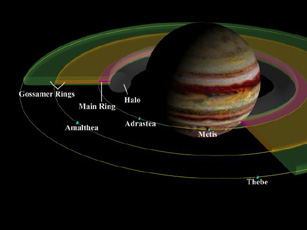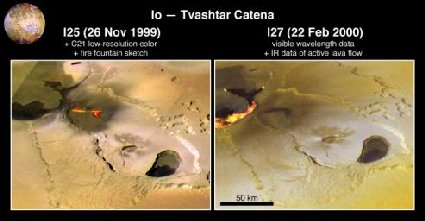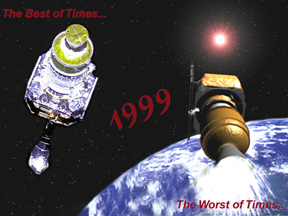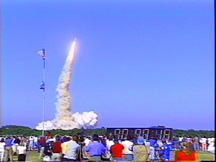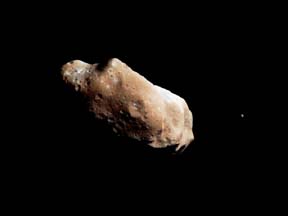Click on image for full size
Image courtesy of NASA/JPL.
Related links:
Galileo Discovers Origin of Jupiter's Rings
News story originally written on September 21, 1998
Scientists recently discovered the origin of Jupiter's rings. With the help of the Galileo spacecraft, it has been deduced that the rings are made from dust and debris that was kicked off of the small moons surrounding Jupiter when these moons were struck by interplanetary meteroids, comets or asteroids.Jupiter's diameter is approximately 86,000 miles (143,000 kilometers). The ring system begins about 55,000 miles (92,000 kilometers) from Jupiter's center and extends to about 150,000 miles (250,000 kilometers) from the planet. Jupiter's rings show no evidence of being made of ice crystals (like Saturn's rings). Jupiter's rings are made up of a main ring and an inner, cloud-like ring, called the halo. Galileo also revealed that there is an outer ring system called the gossamer rings. They are almost-tranparent rings embedded one within the other.
"Rings are important dynamical laboratories to look at the processes that probably went on billions of years ago when the Solar System was forming from a flattened disk of dust and gas," Cornell astronomer Joseph Burns explained. "I expect we will see similar processes at Saturn and the other giant planets," Burns said.
"For the first time we can see the gossamer-bound dust coming off Amalthea and Thebe, and we now believe it is likely that the main ring comes from Adrastea and Metis," Burns said. "The structure of the gossamer rings was totally unexpected," Belton added. "These images provide one of the most significant discoveries of the entire Galileo imaging experiment."
Galileo has been orbiting Jupiter and its moons for 2 1/2 years, and is currently in the midst of a two-year extension, known as the Galileo Europa Mission.


